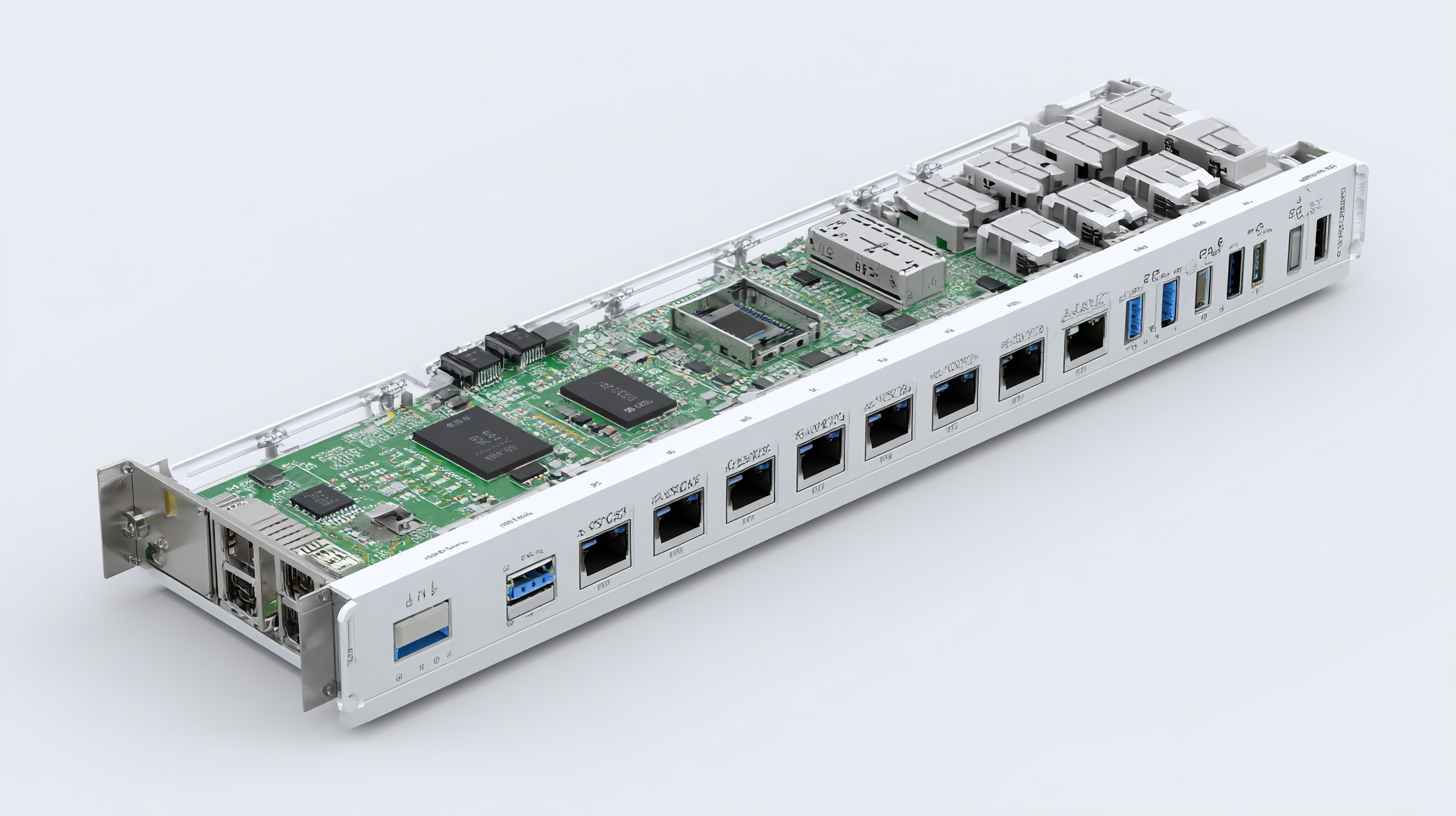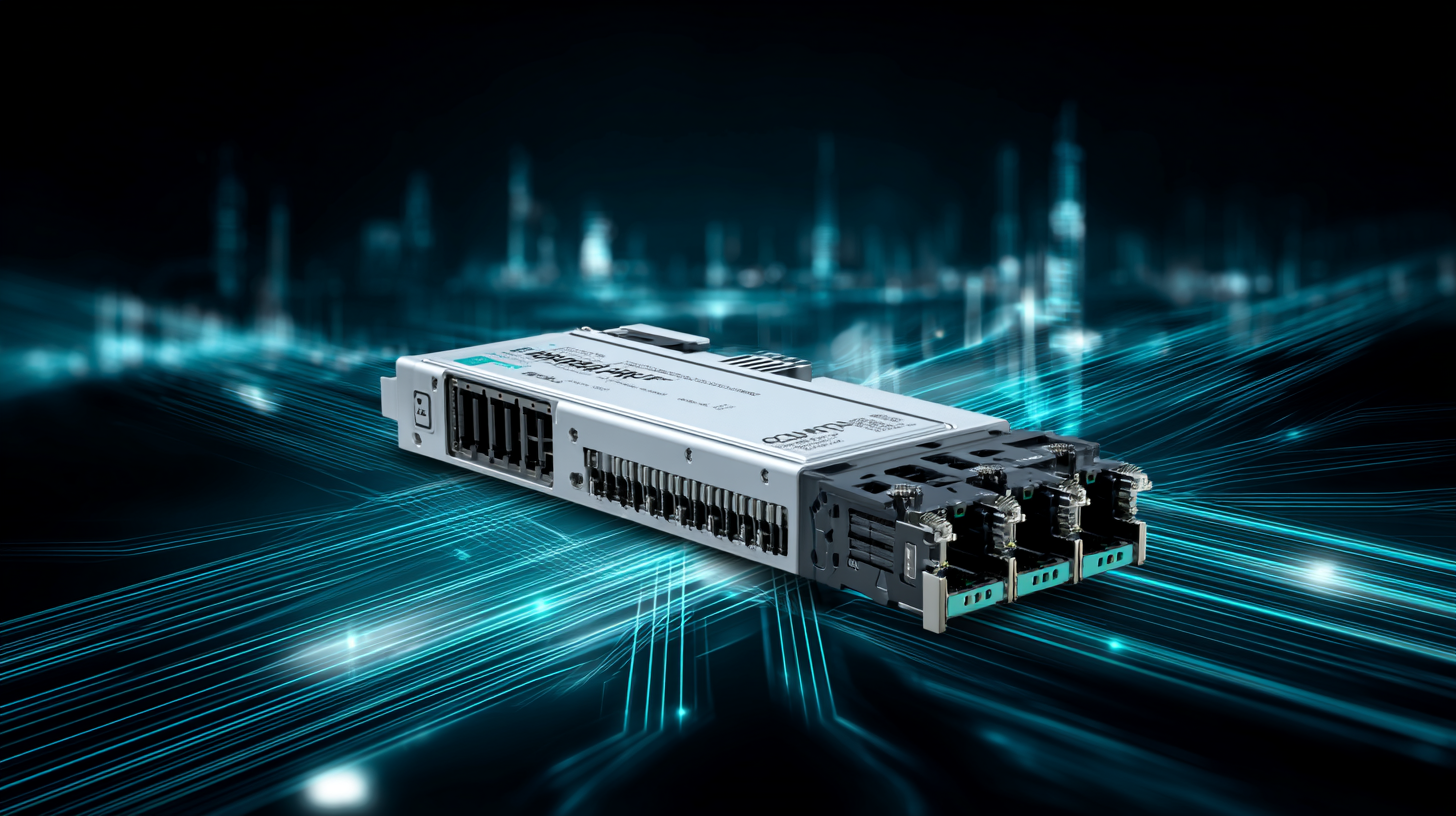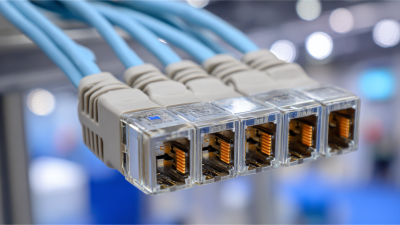Leave Your Message
In today's fast-paced digital landscape, the demand for high-speed, reliable networking solutions has never been greater. One of the most promising technologies meeting this demand is the 10G DWDM Optical Transceiver. This innovative device leverages Dense Wavelength Division Multiplexing (DWDM) to significantly enhance data transmission capacities over optical fiber networks. By allowing multiple signals to be sent simultaneously over a single fiber strand, the 10G DWDM Optical Transceiver not only maximizes bandwidth but also increases the overall efficiency of network infrastructure. As organizations strive to support burgeoning data volumes and improve connectivity, understanding how to effectively implement and optimize the use of 10G DWDM Optical Transceivers becomes crucial. This exploration will provide insights into their benefits, applications, and the transformative role they play in modern networking solutions.

 10G DWDM (Dense Wavelength Division Multiplexing) optical transceivers are revolutionizing the way modern networks operate by providing high-capacity data transmission over long distances. These transceivers leverage the capacity of multiple wavelengths on a single optical fiber, allowing organizations to significantly increase their network bandwidth without the need for additional infrastructure. According to a recent market report by Mordor Intelligence, the global DWDM market is expected to grow at a CAGR of over 16% from 2021 to 2026, highlighting the increasing adoption of this technology across various sectors.
10G DWDM (Dense Wavelength Division Multiplexing) optical transceivers are revolutionizing the way modern networks operate by providing high-capacity data transmission over long distances. These transceivers leverage the capacity of multiple wavelengths on a single optical fiber, allowing organizations to significantly increase their network bandwidth without the need for additional infrastructure. According to a recent market report by Mordor Intelligence, the global DWDM market is expected to grow at a CAGR of over 16% from 2021 to 2026, highlighting the increasing adoption of this technology across various sectors.
One of the key features of 10G DWDM optical transceivers is their ability to support high-speed data rates while maintaining excellent signal quality. With the capability to transmit data at rates up to 10 Gbps per channel, these transceivers are ideal for data centers and service providers looking to enhance their network performance.
Furthermore, by utilizing advanced error correction methods and low-noise components, the transceivers can ensure reliable performance over substantial distances, sometimes exceeding 80 kilometers. This not only optimizes network efficiency but also minimizes maintenance costs, making it a cost-effective solution for operators.
The rapid evolution of networking demands has made enhanced bandwidth and capacity a crucial aspect of modern infrastructure. 10G DWDM optical transceivers are at the forefront of this transformation, enabling networks to leverage dense wavelength division multiplexing technology for significant improvements in data throughput. Recent industry reports indicate that DWDM technology can increase bandwidth capabilities by up to 16 times compared to traditional systems. This leap in performance is pivotal as organizations seek to support growing data traffic driven by cloud computing, video streaming, and IoT applications.
Furthermore, as the market pivots towards higher bandwidth solutions, recent advancements in 400G ZR/ZR+ and 100G ZR digital coherent transceivers illustrate a broader trend in optical networking. These innovations not only revive legacy technologies but also enhance their performance to meet the demands of AI-driven connectivity. According to industry analyses, the deployment of such high-capacity transceivers can result in a 50% reduction in total cost of ownership due to improved efficiency and reduced need for additional infrastructure. This dynamic shift underscores the vital role that 10G DWDM transceivers play in enabling scalable, cost-effective networking solutions in a data-intensive world.
This chart illustrates the increased bandwidth and capacity achieved through the deployment of 10G DWDM optical transceivers, showing the significant improvement in data transmission rates among various network configurations.
 The integration of 10G DWDM optical transceivers into existing networking infrastructure presents a significant advancement for organizations looking to enhance their data transmission capabilities. As reported by the International Data Corporation (IDC), the demand for bandwidth has surged, with global IP traffic expected to reach 4.8 zettabytes per year by 2022. This dramatic increase necessitates a robust infrastructure that can support higher capacities without incurring excessive costs. 10G DWDM transceivers facilitate this by maximizing the use of fiber optic cables, allowing multiple wavelengths to operate simultaneously and effectively increasing throughput without the need for extensive upgrades.
The integration of 10G DWDM optical transceivers into existing networking infrastructure presents a significant advancement for organizations looking to enhance their data transmission capabilities. As reported by the International Data Corporation (IDC), the demand for bandwidth has surged, with global IP traffic expected to reach 4.8 zettabytes per year by 2022. This dramatic increase necessitates a robust infrastructure that can support higher capacities without incurring excessive costs. 10G DWDM transceivers facilitate this by maximizing the use of fiber optic cables, allowing multiple wavelengths to operate simultaneously and effectively increasing throughput without the need for extensive upgrades.
Seamless integration is key to leveraging the benefits of 10G DWDM technology. Many organizations already possess fiber optic networks that can be enhanced with these transceivers to improve performance rapidly. According to a report by MarketsandMarkets, the global market for optical transceivers is projected to grow from $5.3 billion in 2020 to $9.9 billion by 2025, illustrating the industry's shift toward higher-capacity optical communications. When organizations choose 10G DWDM transceivers, they can achieve greater scalability and flexibility, enabling them to keep pace with evolving data demands while optimizing their current resources. This strategic move not only enhances network performance but also prolongs the lifespan of existing infrastructure investments.
In the era of rapid digital transformation, the adoption of 10G DWDM (Dense Wavelength Division Multiplexing) optical transceivers is proving to be a cost-effective solution for modern networking challenges. According to industry reports from the International Telecommunications Union (ITU), the global demand for bandwidth is expected to grow at an annual rate of 30%, prompting network providers to seek technologies that maximize efficiency without breaking the bank. The implementation of 10G DWDM technology allows multiple data signals to be transmitted simultaneously over the same fiber infrastructure, significantly increasing capacity and reducing per-bit costs.
Cost-effectiveness is not merely about purchasing transceivers; it encompasses maintenance and operational efficiencies as well. A study by the market research firm Frost & Sullivan indicates that organizations utilizing 10G DWDM optical solutions can achieve up to a 50% reduction in overall operational costs compared to traditional systems. This is largely due to the decrease in the need for multiple fiber installations and the ability to expand existing networks without extensive upgrades. As businesses prioritize scalability and performance, the efficiency gains provided by 10G DWDM technology solidify its position as a cornerstone of next-generation networking solutions.
| Parameters | 10G DWDM Optical Transceivers | Benefits |
|---|---|---|
| Data Rate | 10 Gbps | High-speed data transmission |
| Wavelengths Supported | C-Band (1530-1565 nm) | Greater network capacity |
| Maximum Reach | Up to 100 km | Long-distance transmission without repeaters |
| Cost per Bit | Lower than 1G solutions | Cost-effective for high-capacity networks |
| Power Consumption | ~3W | Energy-efficient operation |
| Scalability | Easy to scale with existing infrastructure | Future-proofing network investments |
| Modulation Formats | NRZ, Duobinary | Flexible deployment options |
The rapid evolution of network demands has driven the adoption of advanced technologies, and 10G DWDM optical transceivers stand out as a future-proof solution for modern networking infrastructures. These devices enable the transmission of multiple data streams over a single optical fiber, significantly increasing bandwidth while reducing the need for additional cabling. By investing in 10G DWDM technology, organizations can accommodate growing data traffic without incurring excessive operational costs related to network expansion.
Moreover, the long-term benefits of adopting 10G DWDM solutions extend beyond mere capacity enhancements. As businesses continue to embrace digital transformation, having a flexible and scalable networking framework becomes imperative. 10G DWDM transceivers not only provide higher speeds but also ensure compatibility with future advancements, safeguarding investments against technological obsolescence. By deploying these high-performance transceivers, organizations can enhance their network resilience and adapt more readily to emerging technologies, ultimately ensuring a stable and efficient connectivity backbone for years to come.






